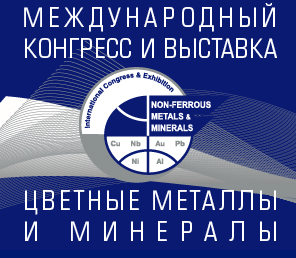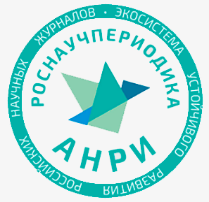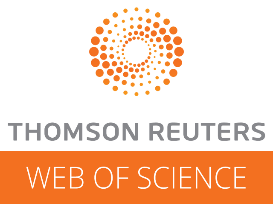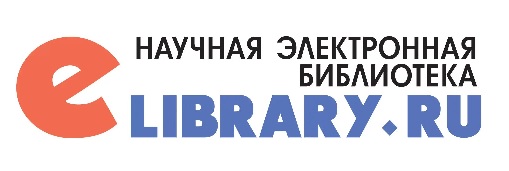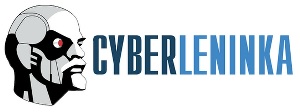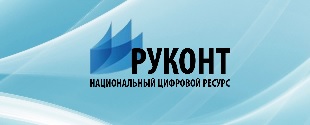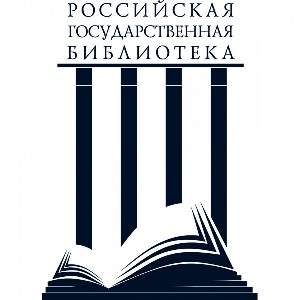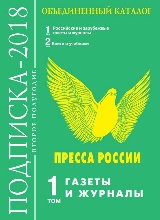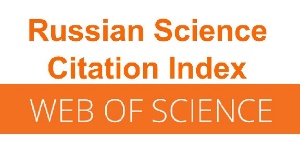О СРАВНЕНИИ МЕХАНИЗМОВ РЕАКТИВНО-ИОННОГО ТРАВЛЕНИЯ SiO2 ВО ФТОР- И ХЛОРСОДЕРЖАЩЕЙ ПЛАЗМЕ
Аннотация
Исследовано влияние соотношения компонентов, вкладываемой мощности и давления газа на электрофизические параметры плазмы, стационарные концентрации активных частиц и кинетику реактивно-ионного травления SiO2 в смесях CF4 + Ar и Cl2 + Ar. При совместном использовании методов зондовой диагностики и моделирования плазмы установлено, что варьирование внешних параметров приводит к однотипным изменениям интенсивностей физического и химического факторов, определяющих скорость реактивно-ионного травления (РИТ) SiO2 в каждой из систем. Единственным исключением является противоположное влияние давления газа на плотность потока атомов фтора и хлора. Проведен анализ кинетики РИТ с использованием расчетных данных по плотностям потоков ионов и химически активных частиц. Установлено, что доминирующим механизмом травления в обеих смесях является гетерогенная химическая реакция, скорость которой коррелирует с изменением плотности потока атомов фтора или хлора. Эффективная вероятность реакции Si + nF → SiFn снижается с ростом интенсивности ионной бомбардировки поверхности. Такая ситуация характерна для отсутствия ионно-лимитируемых стадий травления, при этом отрицательный эффект ионной бомбардировки может быть обусловлен десорбцией атомов фтора в условиях высоких степеней заполнения поверхности адсорбированными частицами и преимущественно спонтанного характера взаимодействия. Эффективная вероятность реакции Si + nCl → SiCln характеризуется значительно более низкими абсолютными значениями и симбатным изменением по отношению к интенсивности ионной бомбардировки. Это указывает на ионно-стимулированный механизм химического взаимодействия, проявляющийся, вероятно, через очистку и/или образование центров адсорбции для атомов хлора.
Для цитирования:
Ефремов А.М., Смирнов С.А., Бетелин В.Б., Kwon K.-H. О сравнении механизмов реактивно-ионного травления SiO2 во фтор- и хлорсодержащей плазме. Изв. вузов. Химия и хим. технология. 2023. Т. 66. Вып. 8 С. 54-62. DOI: 10.6060/ivkkt.20236608.6746.
Литература
Nojiri K. Dry etching technology for semiconductors. Tokyo: Springer Internat. Publ. 2015. 116 p. DOI: 10.1007/978-3-319-10295-5.
Wolf S., Tauber R.N. Silicon Processing for the VLSI Era. Vol. 1. Process Technology. New York: Lattice Press. 2000. 416 p.
Advanced plasma processing technology. New York: John Wiley & Sons Inc. 2008. 479 p.
Lieberman M.A., Lichtenberg A.J. Principles of plasma discharges and materials processing. New York: John Wiley & Sons Inc. 2005. 757 p. DOI: 10.1002/0471724254.
Donnelly V.M., Kornblit A. // J. Vac. Sci. Technol. 2013. V. 31. P. 050825-48. DOI: 10.1116/1.4819316.
Standaert T.E.F.M., Hedlund C., Joseph E.A., Oehrlein G.S. // J. Vac. Sci. Technol. A. 2004. V. 22. P. 53-60. DOI: 10.1116/1.1626642.
Schaepkens M., Standaert T.E.F.M., Rueger N.R., Sebel P.G.M., Oehrlein G.S., Cook J.M. // J. Vac. Sci. Technol. A. 1999. V. 17. P. 26-37. DOI: 10.1116/1.582108.
Gray D.C., Tepermeister I., Sawin H.H. // J. Vac. Sci. Technol. B. 1993. V. 11. P. 1243-1257. DOI: 10.1116/1.586925.
Vitale S.A., Chae H., Sawin H.H. // J. Vac. Sci. Technol. 2001. V. 19. P. 2197-2206. DOI: 10.1116/1.1378077.
Efremov A., Lee B. J., Kwon K.-H. // Materials. 2021. V. 14. P. 1432(1-27). DOI: 10.3390/ma14061432.
CRC Handbook of Chemistry and Physics. New York: CRC Press. 2010. 2760 p.
Efremov A. M., Murin D. B., Betelin V. B., Kwon K.-H. // Russ. Microelectronics. 2020. V. 49. N 2. P. 94-102. DOI: 10.1134/S1063739720010060.
Shun’ko E.V. Langmuir probe in theory and practice. Bo-ca Raton: Universal Publ. 2008. 245 p.
Kimura T., Ohe K. // Plasma Sources Sci. Technol. 1999. V. 8. P. 553-560. DOI: 10.1088/0963-0252/8/4/305.
Hsu C.C., Nierode M.A., Coburn J.W., Graves D.B. // J. Phys. D. Appl. Phys. 2006. V. 39. P. 3272-3284. DOI: 10.1088/0022-3727/39/15/009.
Efremov A., Lee J., Kwon K.H. // Thin Solid Films. 2017. V. 629. P. 39-48. DOI: 10.1016/j.tsf.2017.03.035.
Efremov A., Murin D., Kwon K.-H. // Russ. Microelectronics. 2020. V. 49. N 3. P. 157-165. DOI: 10.1134/S1063739720020031.
Lim N., Efremov A., Kwon K.-H. // Plasma Chem. Plasma Process. 2021. V. 41. P. 1671-1689. DOI: 10.1007/s11090-021-10198-z.
Efremov A., Min N.K., Choi B.G., Baek K.H., Kwon K.-H. // J. Electrochem. Soc. 2008. V. 155. N 12. P. D777-D782. DOI: 10.1149/1.2993160.
Lee J., Efremov A., Lee B.J., Kwon K.-H. // Plasma Chem. Plasma Process. 2016. V. 36. N 6. P. 1571-1588. DOI: 10.1007/s11090-016-9737-y.
Malyshev M.V., Donnelly V.M. // J. Appl. Phys. 2000. V. 87. P. 1642-1650. DOI: 10.1063/1.372072.
Donnelly V.M., Malyshev M.V. // Appl. Phys. Lett. 2000. V. 77. Р. 2467-2470. DOI: 10.1063/1.1318727.
Thorsteinsson E.G., Gudmundsson J.T. // Plasma Sources Sci. Technol. 2010. V. 19. P. 015001 (1-15). DOI: 10.1088/0963-0252/19/1/015001.
Raju G.G. Gaseous electronics. Tables, Atoms and Molecules. Boca Raton: CRC Press. 2012. 790 p. DOI: 10.1201/b11492.
Christophorou L.G., Olthoff J.K. Fundamental electron interactions with plasma processing gases. New York: Springer Science+Business Media LLC. 2004. 776 p. DOI: 10.1007/978-1-4419-8971-0.
Seah M.P., Nunney T.S. // J. Phys. D: Appl. Phys. 2010. V. 43. P. 253001 (1-24). DOI: 10.1088/0022-3727/43/25/253001.
Chapman B. Glow Discharge Processes: Sputtering and Plasma Etching. New York: John Wiley & Sons Inc. 1980. 432 p.
Efremov A.M., Betelin V.B., Mednikov K.A., Kwon K.-H. // ChemChemTech [Izv. Vyssh. Uchebn. Zaved. Khim. Khim. Tekhnol.]. 2021. V. 64. N 6. P. 25-34. DOI: 10.6060/ivkkt.20216406.6377.




